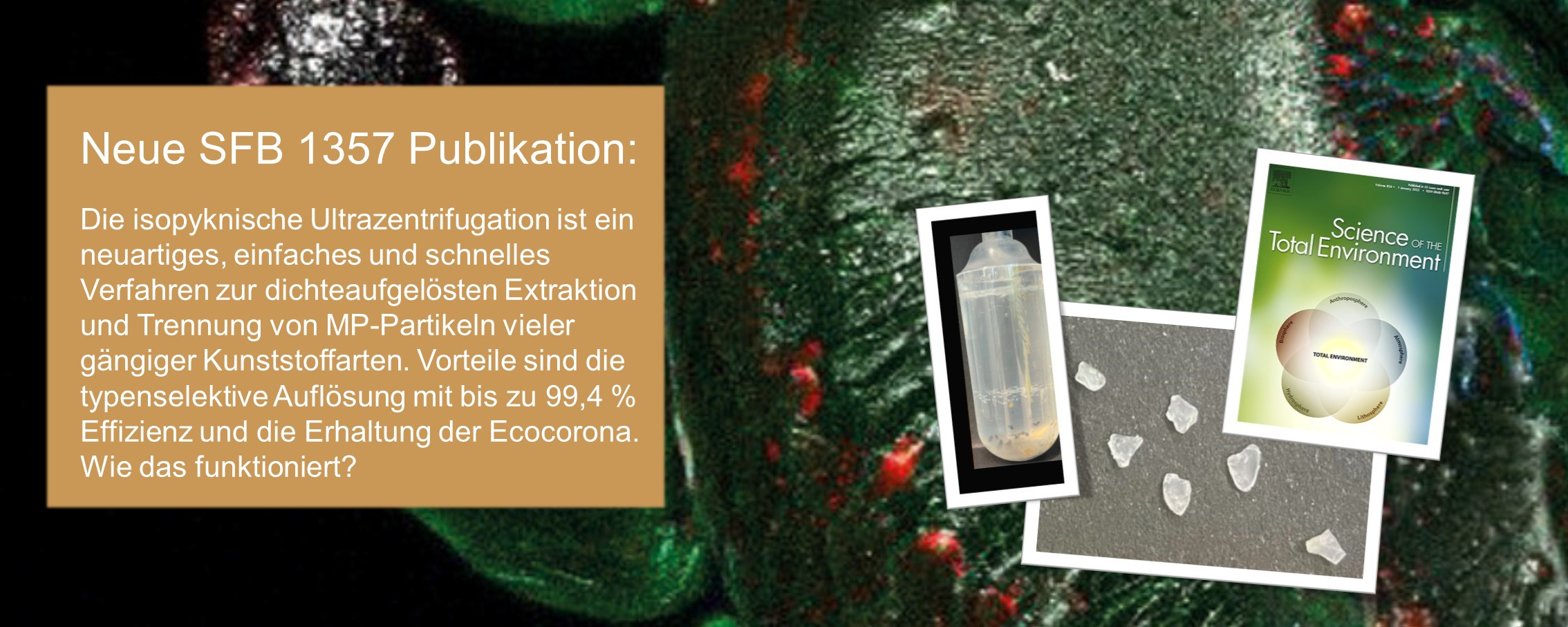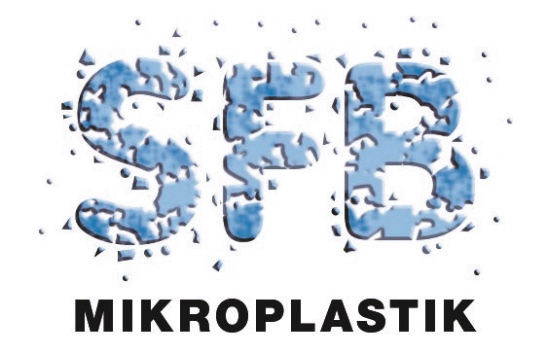News
Neue SFB 1357 Publikation: Jakobs (2023) - A novel approach to extract, purify, and fractionate microplastics from environmental matrices by isopycnic ultracentrifugation
15.01.2023

Herzlichen Glückwunsch an das A06 Team: Aileen Jakobs, Elif Gürkal, Julia Möller, Martin Löder, Christian Laforsch, Tillmann Lüders zu ihrer spannenden neuen Publikation in der Zeitschrift Science of the Total Environment:
"A novel approach to extract, purify, and fractionate microplastics from environmental matrices by isopycnic ultracentrifugation"
DOI: https://doi.org/10.1016/j.scitotenv.2022.159610
Abstract:
The increasing accumulation of microplastics (MP) in the environment is considered one of the most important environmental challenges of our times. Reliable extraction and detection methods for MP in environmental samples are essential for determining the extent of pollution and assessing ecological risks. However, extraction of MP from complex environmental matrices such as soils remains technically challenging. Today, density-based extractions with saturated salt solutions are widely applied. Nevertheless, current methods do not allow for the fractionation of different MP particle types according to their specific polymer densities. Here, we present a novel isopycnic ultracentrifugation approach for the simultaneous extraction and fractionation of MP mixtures based on the particle-specific buoyant densities. In this proof-of-concept study, diffusion-based density gradients were prepared using caesium chloride media, covering a density range between 1.1 and 1.5 g mL−1, sufficient to resolve many common polymer densities. We selected MP particles with a low (polyamide; PA66), medium (polybutylene adipate terephthalate; PBAT), and high (polyethylene terephthalate, PET) density to validate separation performance. Both pristine and soil-incubated MP mixtures showed clear banding patterns at expected buoyant densities after isopycnic separation. μFTIR imaging of subsamples collected from resolved MP fractions showed a polymer-specific separation of ≥87.6 %. In addition, the quantitative recovery of MP particles from soil was between 86 and 99 %. The potential of isopycnic ultracentrifugation to preserve MP-associated biofilms was also assessed. Soil-incubated MP particles were inspected by confocal laser scanning microscopy before and after isopycnic separation, indicating a preservation bioorganic structures. Hence, isopycnic ultracentrifugation offers a powerful novel approach for a polymer-specific extraction and resolution of MP particles with a wide potential for applications in MP research.

